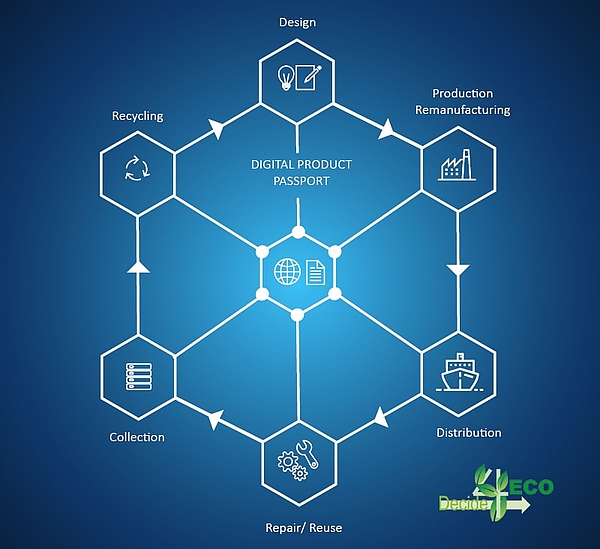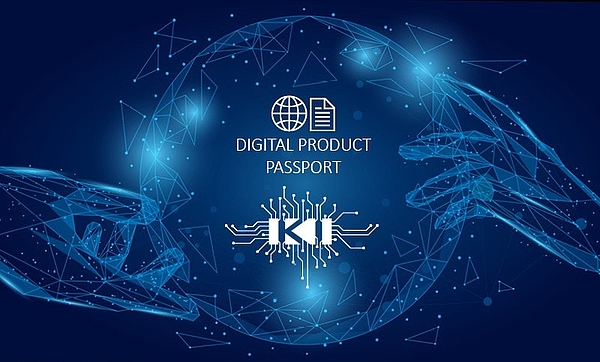
|
Artificial Intelligence facilitates Interaction with Digital Product PassportsBy Rainer Zeifang In the future, the EU will require a digital product passport (DPP) for a large number of products. The DDP provides information about the components, materials and substances used in a product and how the product can be repaired, recycled and disposed of. PROSTEP does not only support the creation of DDPs but, as part of the Decide4ECO project, has also developed an AI-based chatbot that makes this information available more quickly. Many companies will in the future be facing the challenge of using their numerous different data sources to generate a transparent digital product passport that is always up-to-date. This is because, from 2027 onwards, the EU Ecodesign Regulation will require them to record, manage and, if necessary, share with partners information on materials and substances, carbon footprint, resources used and the recyclability for certain groups of products, as well as operating instructions, product identification and proof of origin. Ensuring and providing proof that this information is correct, complete and up-to-date on an ongoing basis is a challenge that can no longer be tackled manually and on paper. Within the framework of the joint project Decide4ECO funded by the German Federal Ministry for Economic Affairs and Climate Action (BMWK), PROSTEP and its consortium partners have examined three key requirements with regard to sustainability and the DPP and developed solutions that have been incorporated into a demonstrator:
The DPP is not only intended as a tool that regulatory authorities can use to monitor the market. It should also be possible, for example, for manufacturers to use it for sustainability reporting, retailers for marketing purposes, repair shops for making repairs or for recycling, and consumers for making purchase decisions. Access to the DDP must therefore be as easy and flexible as possible and also support different views of the digital twin. 
Experience shows that the information required to create the DPP is stored in different IT systems. Collecting this information and keeping it up to date manually would be far too time-consuming. This is why we use our digital thread platform, which incorporates the time-tested solutions OpenCLM for cross-domain data linking and OpenPDM for PLM integration, for the automated generation of the DPP. OpenPDM ensures access to the information in the most widely used PLM, ALM and ERP systems and other enterprise applications using standardized connectors. Asset Administration Shell as common denominator The Asset Administration Shell (AAS), which is divided into different AAS submodels, provides the technical foundation for creating the DPP and exchanging the relevant information. The individual components of the DPP such as product identification, materials, substances and recycling information are described in these submodels in a standardized, machine-readable format to ensure that they can be exchanged without difficulty. Developing, manufacturing and operating complex, software-intensive products usually involves multiple companies, all of which provide information for the DPP. The AAS describes the digital twin or the DPP in a standardized format that allows all the partners in the value chain to use the information and to supplement it with their own data. Our new EDC Connector makes it possible for this information to be made available in trusted data ecosystems such as Catena-X or Manufacturing-X in a Gaia-X-compliant way. A neutral trust center guarantees compliance with the rules of conduct agreed on for data sharing. Intuitive interaction with the DPP thanks to AI Finding the "needle" in the "haystack" of hierarchically structured information without having to be a IT expert remains a challenge. The product information relevant to the respective user group is distributed across a variety of different AAS submodels. Users would normally have to be familiar with the syntax of the information model or be well versed in a complex query language in order to access the information. Which is why we have integrated a chatbot in the solution that makes it possible to search for DDP-related information, aggregate it and compare it using natural language. The chatbot uses generative AI methods, similar to those used by ChatGPT, to access the information. 
Integration of the chatbot in the solution has the advantage that the information is very easily accessible for all user groups. They can, for example, ask how big the carbon footprint of a product is – including transportation, provided the delivery address is known – and which method was used to calculate the carbon footprint. This means that end users who place particular emphasis on sustainability can compare the carbon footprint of different products before making a purchase decision. Live demo at the Hanover trade fair (HMI) PROSTEP will for the first time be demonstrating how different user groups can intuitively get to grips with the digital product passport at this year's Hanover trade fair from 31.03. – 04.04.2025. If you are interested in this demonstration, you will find us at the Industrie 4.0 booth D26 in hall 8. |
|
| © PROSTEP AG | ALL RIGHTS RESERVED | IMPRINT | PRIVACY STATEMENT | YOU CAN UNSUBSCRIBE TO THE NEWSLETTER HERE. |

